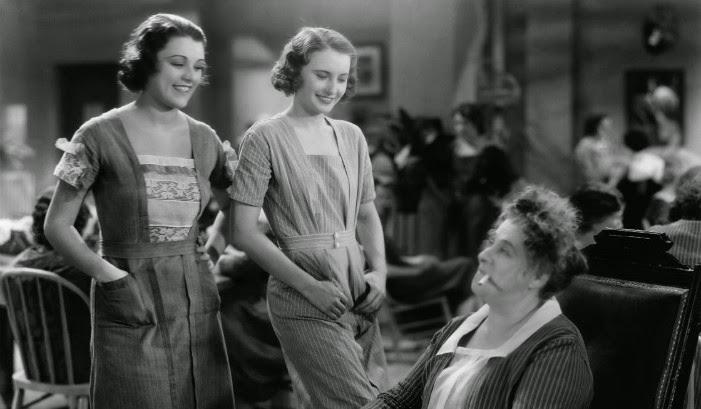
Nan Taylor (Barbara Stanwyck) is beautiful, sexy, and a hard as nails criminal who doesn’t suffer fools lightly. She gets pinched pulling a bank job with her pal Lefty (Harold Huber). As she awaits her sentence, revivalist David Slade (Preston Foster) comes back into her life to try and prove her innocence. But Nan can’t lie to Slade and ends up in the women’s dorm of the “big house”. It isn’t long after arriving that Nan is working an angle to bust free from prison with a couple of buddies from the men’s dorm.
Ladies They Talk About (1933), a pre-code prison drama from Warner Bros., is all Stanwyck. Everything about this hard boiled flick works only because of Stanwyck. It’s a great vehicle for her and any shortcomings in the script are more than compensated for by her knock-out performance. Stanwyck, literally and figuratively, hits with a closed fist in Ladies They Talk About.
There are two notable aspects of Ladies They Talk About that, even for a pre-code picture, are relatively unique. Firstly there’s a decent amount of representation of People of Color in the mise en scène. These people never qualify as full fledged characters in the film but the picture does acknowledge their presence at least. Secondly, the women incarcerated with Stanwyck are all guilty of the crimes for which they have been sentenced and they flaunt it. When Lillian Roth gives Stanwyck the tour of their prison every inmate gets a chance to brag about their crime in a playful game of oneupmanship.
There is some queer coding in Ladies They Talk About (the cigars) but nothing that allows the text to be read in an explicitly non-heteronormative way. Stanwyck’s relationship with Roth and Dorothy Burgess’ jealousy of that relationship is never given more than a few seconds of screen time. Ladies They Talk About vehemently insists that the real triangle is between Stanwyck, Burgess and dopey Preston Foster. Queer representation, a constant in prison films, is relegated to peripheral characters with only one or two lines.
Ladies They Talk About is not a good movie. It’s fun and it’s lead is captivating, but it constantly feels as though there is a better film hiding there. Perhaps if Ladies They Talked About were slightly longer than its meager sixty-nine minutes there would be time to develop the supporting characters and create a clearer world for the film. As it is, Ladies They Talk About is worth watching only because of the lady we still all talk about, Barbara Stanwyck.
